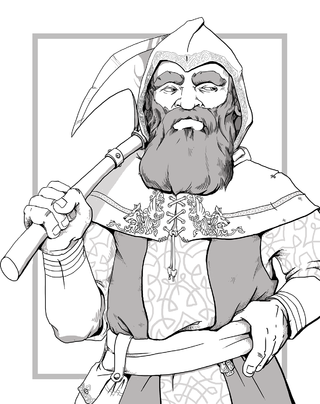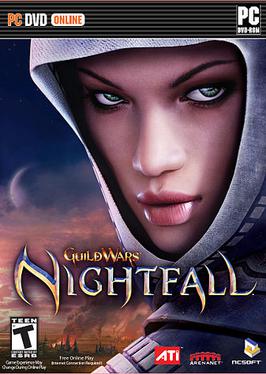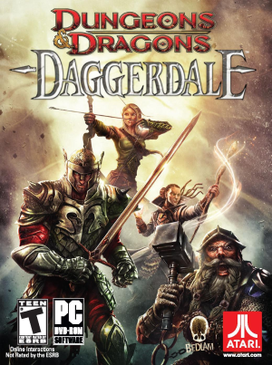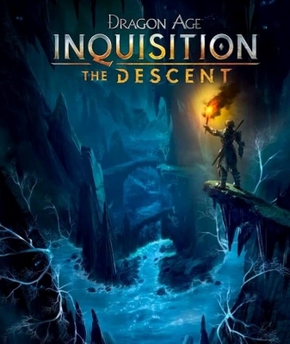Guild Wars is an online role-playing game franchise developed by ArenaNet and published by NCSOFT. The games were critically well received and won many editor's choice awards, as well as awards such as "Massively Multiplayer/Persistent World Game of the Year" by the Academy of Interactive Arts & Sciences, as well as Best Value, Best Massively Multiplayer Online Role-Playing Game (MMORPG), and Best Game. Guild Wars was noted for being the "first major MMO to adopt a business model not based on monthly subscription fees", its instanced approach to gameplay, and the quality of the graphics and play for computers with low specifications. In April 2009, NCSoft announced that 6 million units of games in the Guild Wars series had been sold. The sequel and fourth major entry into the series, Guild Wars 2, was announced in March 2007 and released on August 28, 2012. It features updated graphics and gameplay mechanics, and continues the original Guild Wars tradition of no subscription fees. The Guild Wars series had sold 11.5 million copies by August 2015
ArenaNet, LLC is an American video game developer and subsidiary of NCsoft, founded in 2000 by Mike O'Brien, Patrick Wyatt and Jeff Strain and located in Bellevue, Washington. They are most notable as developers of the online role-playing game series Guild Wars.

The Lord of the Rings: The Battle for Middle-earth II is a 2006 real-time strategy video game developed and published by Electronic Arts. The second part of the Middle-earth strategy game series, it is based on the fantasy novels The Lord of the Rings and The Hobbit by J. R. R. Tolkien and its live-action film series adaptation. It is the sequel to Electronic Arts' 2004 title The Lord of the Rings: The Battle for Middle-earth. Along with the standard edition, a Collector's Edition of the game was released, containing bonus material and a documentary about the game's development.

A dwarf, in the Dungeons & Dragons (D&D) fantasy roleplaying game, is a humanoid race, one of the primary races available for player characters. The idea for the D&D dwarf comes from the dwarves of European mythologies and J. R. R. Tolkien's novel The Lord of the Rings (1954-1955), and has been used in D&D and its predecessor Chainmail since the early 1970s. Variations from the standard dwarf archetype of a short and stout demihuman are commonly called subraces, of which there are more than a dozen across many different rule sets and campaign settings.

Guild Wars Factions is a fantasy action role-playing game and the second stand-alone campaign in the Guild Wars series developed by ArenaNet, a subsidiary of NCSOFT corporation. It serves as both a standalone game and first expansion pack to the base game, which is referred to as Prophecies. Simply referred to as Factions, it introduces the continent of Cantha, inspired by East Asian cultures, where two warring factions, the Luxons and the Kurzicks, are locked in a global persistent war. Players are able to join in this conflict, assisting their chosen faction in claiming towns on the game map.

The Age of Worms Adventure Path is the second Adventure Path for the Dungeons & Dragons role-playing game, published over twelve installments from July 2005 through June 2006 in Dungeon magazine. A campaign designed to take player characters from 1st to 20th level, Age of Worms was given an Honorable Mention in the "Best Adventure" category of the 2007 ENnie Awards.

Guild Wars Nightfall is a fantasy action role-playing game and the third stand-alone campaign in the Guild Wars series developed by ArenaNet, a subsidiary of NCSOFT corporation. Nightfall was released worldwide on October 27, 2006, having been in development alongside Guild Wars Factions since November 2005.

Guild Wars is a multiplayer online action role-playing game developed by ArenaNet, a subsidiary of South Korean game publisher NCSOFT, and released in 2005. As the original installment of the Guild Wars series, its campaign was retroactively titled Prophecies to differentiate it from the content of subsequent releases. The game contains a co-operative role-playing portion and a competitive Player versus Player (PvP) portion. In PvP, players may use either their co-operative characters or PvP-exclusive characters who are inherently maximum level and have account-based access to unlocked content.

Guild Wars 2 is a free-to-play, massively multiplayer online role-playing game developed by ArenaNet and published by NCSoft. Set in the fantasy world of Tyria, the core game follows the re-emergence of Destiny's Edge, a disbanded guild dedicated to fighting Elder Dragons, colossal Lovecraftian-esque entities that have seized control of Tyria in the time since the original Guild Wars (2005), a plot line that concludes in the third expansion End of Dragons (2023). The game takes place in a persistent world with a story that progresses in instanced environments.

Dragons of Desolation is the fourth and final module in the first major story arc in the Dungeons & DragonsDragonlance series of game modules. It is one of the fourteen Dragonlance adventures published by TSR between 1984 and 1986. The module is intended for player characters of level 6–8.

The Complete Book of Dwarves is a supplemental rulebook for the 2nd edition of the Advanced Dungeons & Dragons fantasy role-playing game, published in 1991 by TSR, Inc. It contains a variety of information useful to playing dwarf characters in the game, including information on strongholds, dwarven subraces, character "kits", role-playing, mining, and more. The book was later reprinted in November 1993, with a slightly different cover.
Elona is a single-player, roguelike game developed by Japanese developer Noa; it was released in August, 2007.

Dungeons & Dragons: Daggerdale is an action role-playing video game developed by Bedlam Games and published by Atari. The game includes both single and co-operative multiplayer modes and is set in the Forgotten Realms.

Player's Guide to the Dragonlance Campaign is an accessory for the 2nd edition of the Advanced Dungeons & Dragons fantasy role-playing game, published in 1993.

Player's Secrets of Baruk-Azhik is an accessory for the 2nd edition of the Advanced Dungeons & Dragons fantasy role-playing game, published in 1996.

Realm of the Mad God is a massively multiplayer online shoot 'em up video game created by Wild Shadow Studios and currently owned and developed by DECA Games. It was in public beta from January 2010 and the browser version launched on June 20, 2011. On February 20, 2012 the game was made available on the digital distribution platform Steam for Microsoft Windows and OS X.

Guild Wars 2: Path of Fire is the second expansion pack for Guild Wars 2, a massively multiplayer online role-playing game developed and published by ArenaNet. It was released on Microsoft Windows and macOS on September 22, 2017, and was made available for pre-purchase on August 1, 2017.

Dragon Age: Inquisition – The Descent is a downloadable content (DLC) pack developed by BioWare and published by Electronic Arts for the 2014 action role-playing video game Dragon Age: Inquisition. It was initially released for Xbox One, PlayStation 4, and Microsoft Windows through Electronic Arts' digital distribution platform Origin on August 11, 2015. The pack follows the Inquisition's exploration of the Deep Roads, a subterranean network of underground pathways and tunnels built by dwarven civilizations of yore, to investigate the occurrence of strange earthquakes which is disrupting international trade of the precious material lyrium.

Guild Wars 2: End of Dragons is the third expansion pack for Guild Wars 2, a massively multiplayer online role-playing game developed by ArenaNet and published by NCSoft. It was released on Microsoft Windows on February 28, 2022, and was made available for pre-purchase on July 26, 2021.
















